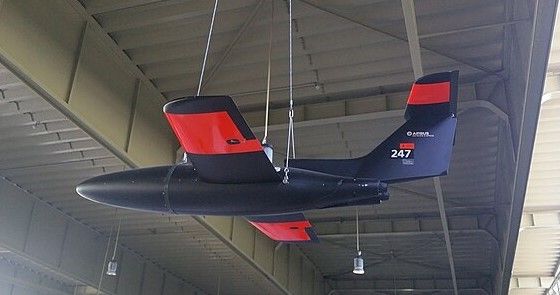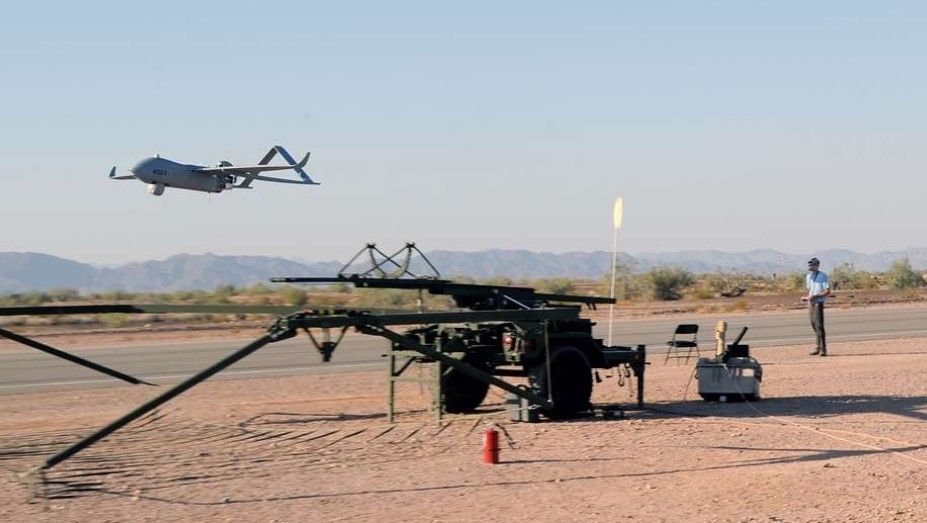Europe Innovates with a Catapult-Launched Anti-drone Drone
Uncertain of US support, European arms manufacturers look to homegrown, low-cost drone designs.

Recent geopolitical shifting has seen European countries scurry to bolster their defences. At the same time, the defence industry is looking for affordable solutions to counter low-cost drone attacks.
By focusing on a reuseable drone body based on a 20-year-old training dummy design, Airbus believe they have the plans for an affordable solution. By also including a low-cost catapult launch system, the designers have made further savings which will attract military commanders who are witnessing the damage drone attacks are causing in both Russia and Ukraine.
Furthermore, as the design contains no US technology, it will be free of the Washington-imposed International Traffic in Arms Regulations, allowing it to be exported solely on the decision of European investing nations.

As the arms industry journal Defense News reports, “Executives announced the drone design at an unmanned systems trade show in Bonn, Germany, on March 26.” Noticing that it is a solution to the issue of LOAD (Low-Cost Air Defence), where the expense of shooting down cheap attack drones is becoming unaffordable in the long-term. For this reason, the report explains, “It will be based on a platform from the early 2000s, the Do-DT25, an unmanned aerial system used for target practice. Because of that use case, it was designed to be both cheap and disposable.”
While the project is at an early stage, military analysts have concluded the following based on the previous design and information shared by Airbus.
· The drone will carry three guided missiles.
· The drone will be launched using a catapult but will return to base before deploying a parachute to descend so that it can be recovered and reused.
· It will have an operational range of 100km.
· A two-missile prototype will be in flight by the end of the year, with the finished weapon operational by 2027.
· The Do-DT25 that it is based on is 3.1 meters long and has a wingspan of 2.5 meters.
· It can fly for around an hour at its maximum speed of 300 knots.
The concept is designed to bridge the gap between an air combat drone and a loitering munition. According to an Airbus spokesperson, the drone will be “supervised from a ground control station [which will] coordinate the drones on the basis of radar data or air situation images and can therefore autonomously search for, detect and – following the approval of their engagement – combat enemy kamikaze drones.”
Related articles: Electronic Warfare and the Race for GPS-Free Drones or Ukraine Unveils Long-Range Drone to Redefine Warfare
How successful the new drone design will be remains to be seen, however military analysts see it as further evidence of how the defence industry is reacting to the issue of increasing drone attacks by further advancing defensive-drone technology.
As Defense News notes, “The autonomous capability promised for LOAD likely builds on Airbus’s previous work with the Do-DT25 platform. In March 2023, the company demonstrated the autonomous guidance and control of several DT-25 drones from an A310 MRTT tanker aircraft, showcasing advances in precise relative navigation, in-flight communication and cooperative control algorithms.”

As European nations race to strengthen their defences against emerging threats, Airbus’s counter-drone drone concept represents a significant step toward a cost-effective and scalable solution. By leveraging an existing training drone platform and integrating autonomous capabilities, the design offers a promising answer to the growing challenge of low-cost aerial threats. While the project is still in its early stages, its potential to enhance European defence systems without relying on US technology makes it a compelling development in the evolving landscape of modern warfare. Standing as a clear indication of the defence industry’s commitment to adapting and innovating in response to new security challenges.

